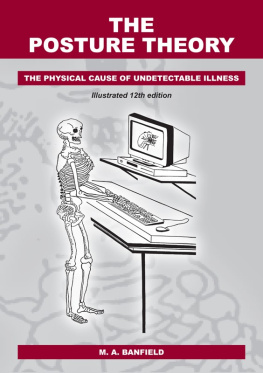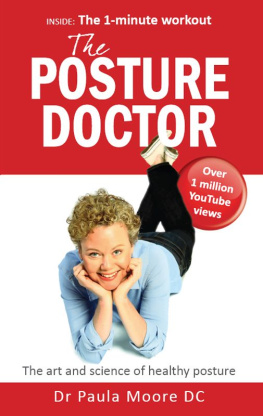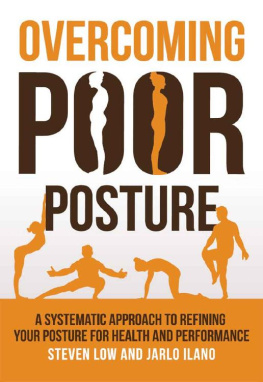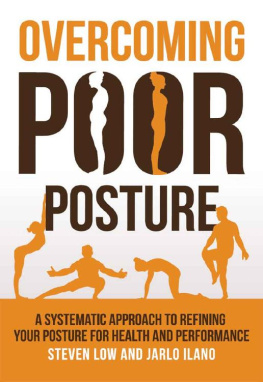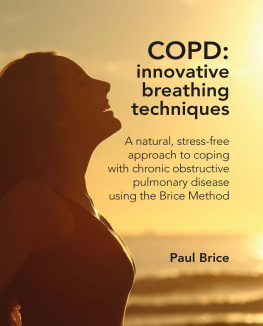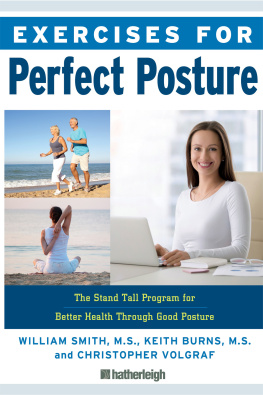Published by M.A. Banfield
M.A. Banfield
I.S.B.N. 0 9585390 2 2
PREFACE TO THE 12TH EDITION
I decided to present my theory in booklet form when computer technology became available in Australia in 1994, and sell it to school and public libraries. I then proceeded to add about 100 pages per year for the next 8 years until the year 2000 when the 11th edition was a 1005 page hardback. I continued to make some occasional additions between 2001 and 2002 but decided not to publish another edition.
Recently, in 2012, with advances in publishing technology, I decided to reproduce the 11th edition as an eBook. However, as the extra 80 pages have already been written I have decided to present it as the 12th edition.
I have also changed the subtitle to something which is less confusing and more easily understood, namely from The physical basis for hypochondria to The physical cause of undetectable illness.
PREFACE TO THE 11TH EDITION
The 11th edition of The Posture Theory provides an enhanced index.
This is partly in response to the requests of many librarians who have described this publication as a very useful reference book and the only one in their collection which deals extensively with the subject of posture and health, and who have therefore advised me of the importance of including a comprehensive index.
It is also partly because much of my research was made possible by selecting books which had some aspect of health implied in their title and because I used the index to locate specific pages which gave precise information that might be useful in providing clues to the problems that I was trying to solve. I also occasionally noticed information about different subjects on adjacent pages which gave clues to other problems, that I could note and use later. By this means I was able to gain a detailed understanding of the individual aspects of the various umbrella themes of my book.
It was not practical to provide an index in the earliest editions because my priority was to compile as many ideas and as much evidence as possible in support of the themes of the book. However I was able to introduce an index with about 100 entries in the 8th edition, and this was increased to 500 entries in the 10th edition.
This 11th edition presents a much improved index which includes references, sub-references, and cross-references to thousands of alphabetically listed subjects.
The objective is to provide readers with the capacity to extract information from one source in a few minutes that I have compiled from hundreds of books, journals, newspaper articles, and radio and television shows, over a period of more than twenty years.
For example, in a few minutes, a person with back pain will be able to find information about a variety of causes and treatments for their particular condition. A person who is interested in biographies will be able to read about the ideas or health problems of famous individuals such as Charles Darwin, and a historian who is interested in Napoleon will be able to read about his health, and when they learn that he was regarded as a hypochondriac by British doctors, they may wish to read items about the history of hypochondria. Typists who have been told by their doctors that their R.S.I. is a brand new imaginary disease, may be interested in a summary of the history of R.S.I. with quotes from a book by an independent research journalist named Paul Brennan. Employees who are claiming workers compensation for an occupational injury and who find themselves on a medico-legal merry-go-round may wish to find out how and why that happens and what to do about it. Women who have had difficulty getting some understanding of their menstrual pain from male gynaecologists may be interested in the opinions and recommendations of a female gynaecologist who has actually suffered from the problem, and finally people who have been told that their Chronic Fatigue Syndrome is trivial may be interested in the opinions of a doctor and a lawyer whose children had the problem, and a psychiatrist who suffered from the condition himself.
The 11th edition also provides additional ideas and evidence in support of the themes of the book which include the idea that poor posture is a major cause of the health problems of modern sedentary civilisation, and that those problems result from compression and distortion of internal anatomy, and that poor posture is the major cause of the undetectable symptoms of hypochondria. There is the theme that the tight clothing worn by modern people causes many of the diseases of civilisation for similar reasons, and there is the final aspect of the book which provides and independent critical review of the ideas and practices of the twentieth century medical profession.
These themes are supported by nearly a thousand pages of evidence which are comprehensively referenced and indexed and are now readily available to anyone who wishes to use the information for their own research. M.B.
PREFACE (FROM THE 6TH EDITION)
The Posture Theory began as a way of explaining how poor posture could adversely affect the spine and compress the abdomen to produce a multitude of symptoms for which there was no other physical explanation - the symptoms of hypochondria.
There is very little evidence to support such an idea in modern literature, but in the 19th century, when tight waisted whalebone corsets were fashionable, there were extensive studies into the affects of abdominal compression, so that information has been incorporated into the theory.
That led to a consideration of the constricting affects of tight collars, belts, girdles, and garters, and to some mention of the influence of high heel shoes which tilt the spine and womb.
That further led to a review of 17th century medical theories, which summarised the ideas of the previous two millenniums, and to comments on the affects of the tight waisted stays which were worn by 17th century men and women.
That, in turn, presented a contrast with the good health of the ancient Greeks, and the rarity of some health problems amongst primitive tribespeople, who wore loose clothing and were physically active as part of their culture or lifestyle, and that provided an ultimate conclusion that many of the symptoms and ailments of the 20th century are due to the poor posture, sedentary lifestyle, and tight clothing of modern civilisation.
The Posture Theory therefore presents many new questions and answers about the nature of disease, and also provides answers for numerous previously unexplained medical mysteries, as well as providing evidence in support of many previously disputed and dismissed medical ideas.
The questions are introduced in the following list. The answers are in the book.

